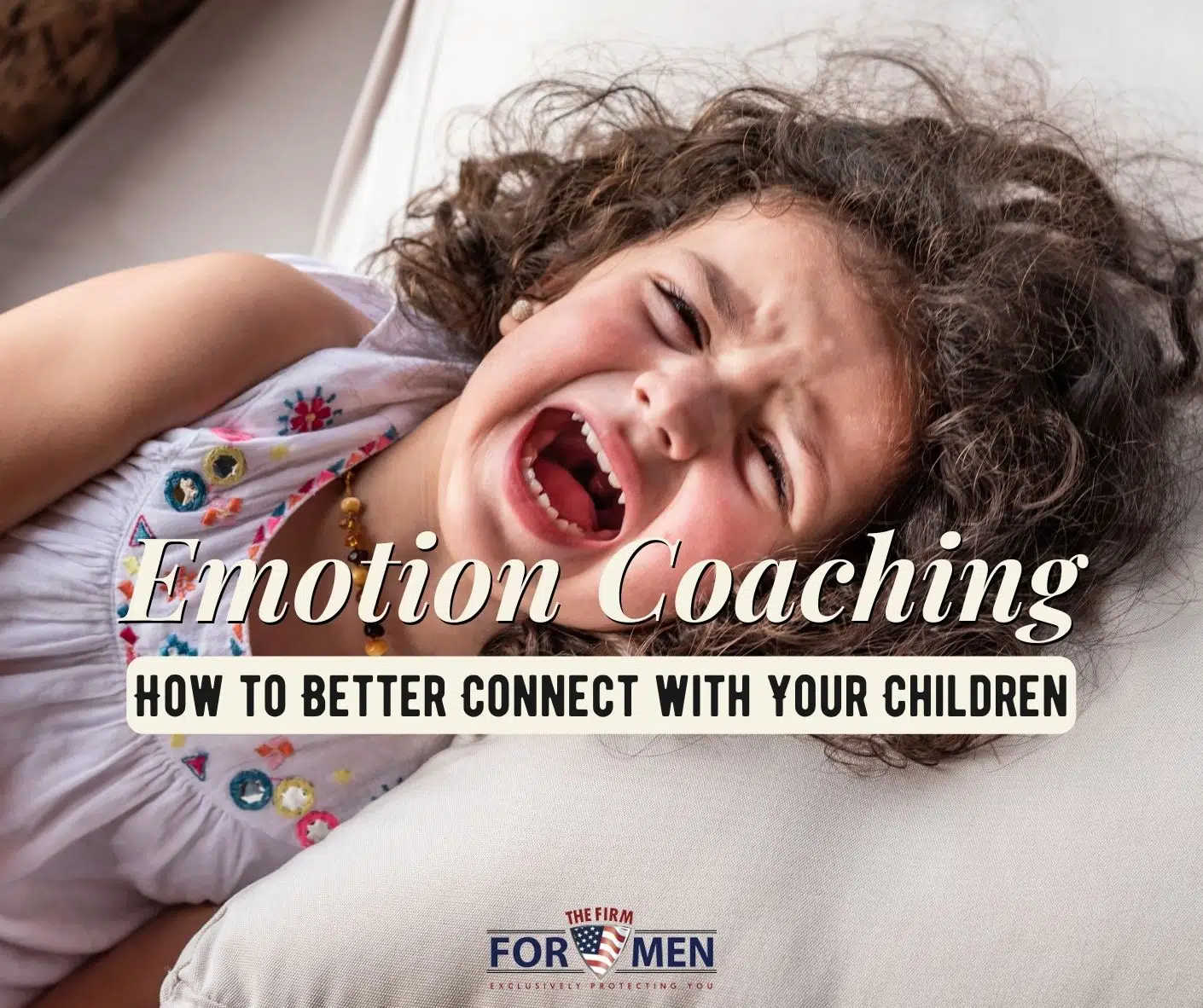Who taught you to regulate your emotions? Most of us cannot point to a specific person or moment when we learned to control our anger, to express love, to handle our fears. You can do your children a huge, lifelong favor by using a technique — emotion coaching — to teach your children self-regulation. The advantage? Less work for you as the disciplinarian and more pleasure as the parent.
What’s “The Problem”?
Too often parents use external discipline and emotionally trapping phrases on their kids:
- “Don’t cry, everything will be ok.”
- “Be brave. You can handle this. Suck it up.”
- “I’m going to need to spank you.”
- “Give your aunt a nice big hug and kiss.”
- “Stop crying. Be a real man.”
- “I promise you everything will turn out all right.”
- “You calm down or I’ll give you something to be really sorry about.”
- “Will you stop all that dancing and whooping and racing around?!”
You may mean well, but you are sending signals to your children that you are in charge of their behavior, not them. You are signaling that their natural emotions are meant to be quashed, suppressed, buried.
Some of the behaviors for you, the parent, to consciously stop include:
- Making promises you cannot possibly keep, like saying you will never die, or your children will never get hurt
- Commanding your children to turn on or off emotions and affection
- Physically disciplining your children — teach your children to control themselves
- Threatening your children
- Robbing your children of the full depth and breadth of emotional reactions
Tune In to Tune Up
Dr. John Gottman developed emotion coaching as a way to help children grow in emotional intelligence, as described in Psychology Today.
The five steps:
- Awareness — Be aware of your child’s emotions, tuning in to what your child is feeling (observe voice tone, facial expressions, body language)
- Teaching — You tune in to your child so that, after she or he expresses strong emotions, you can help your child process feelings, first by recognizing them
- Empathizing — Reassure your child that all humans feel emotions; put yourself in your children’s eyes and support them through the emotional experience (without belittling or shortcutting them); this helps your child to identify the emotions
- Labeling — Labeling emotions helps the child learn self-regulation and discern differences between, for example, contentment and joy, sullenness and anger, or nervousness and fear
- Limiting — No human is permitted to lash out in the full range of human emotions without consequences, so teach your child that, while emotions are valid, methods of expressing them must have limits
Strike While the Iron is … Cold?
As a parent, emotion coaching can seem daunting. How to start? When do you do what? Licensed clinical psychologist Dr. Alex Abramowicz uses a phrase to help parents master emotion coaching. “I tell parents to strike while the iron is cold.” Support and protect your child through the emotional episode and then, after a calming period, walk your child through the five steps.
Suppose your child is giddy and elated with pure joy from a birthday party, a holiday gift-opening binge, or a stellar report card. Your child is literally leaping and bouncing around your house.
Is the child in danger? Possibly, so gently guide your little Tigger to a safe area (lawn, bedroom, playroom) to burn off the joyous energy. Does the child need a spanking? Definitely not.
Watch and monitor your child’s body language, words, tone, and actions. Later, when Tigger is tame, talk your child through the five steps:
- “Even though I was worried you might bump your head, I could see how happy you were. Are you excited and happy about the [party, presents, report card]?”
- “Did you see you were really moving around fast? Did you feel like you were breathing heavily, and you were smiling from ear to ear? How about all that noise you were making? You sounded loud but not upset. Your voice was a way I knew you were happy, not angry.”
- “I know when I feel very happy, I want to jump for joy, too. When I am excited and happy, I sometimes make whooping noises. It’s so great to feel happy and excited like that sometimes, isn’t it?”
- “Do you think you were feeling happiness, frustration, contentment, or sadness? Happiness? That’s great! Other words for that emotion are joy, exuberance, gaiety, or glee. Some people say you are in high spirits or feel exhilarated. It’s much more than being content, isn’t it? And that feeling is nothing like anger or frustration.”
- “But you don’t usually see adults jumping around like that, do you? That wouldn’t be safe. So you can start to think about feeling happy inside, all giggly and wanting to shout, but some places won’t be safe for shouting and bouncing around, right?”
No human can metacognitively process emotions while experiencing those emotions. That is why Dr. Abramowicz’s “cold” method works, on children as young as three or as old as 17.
You help the child intellectually process and regulate the emotion after feeling them. The next time your little Tiggers bust out, you might be happily surprised to see them self-regulate and calm faster, with less bouncing and quieter exuberance.
The Firm For Men wants to help all of Virginia’s men to enjoy happier, healthier lives. Telephone our Virginia Beach office at (757) 383-9184 or connect with us online today! We work with you in all areas of family law, including child custody, child support, paternity, and more.

